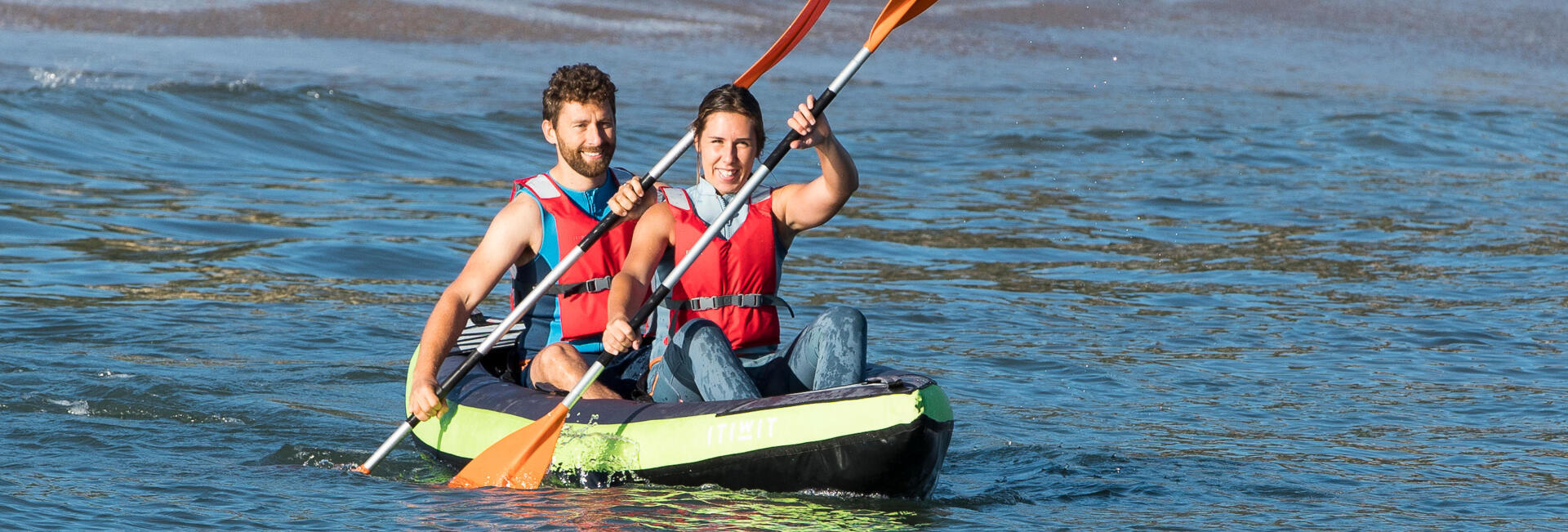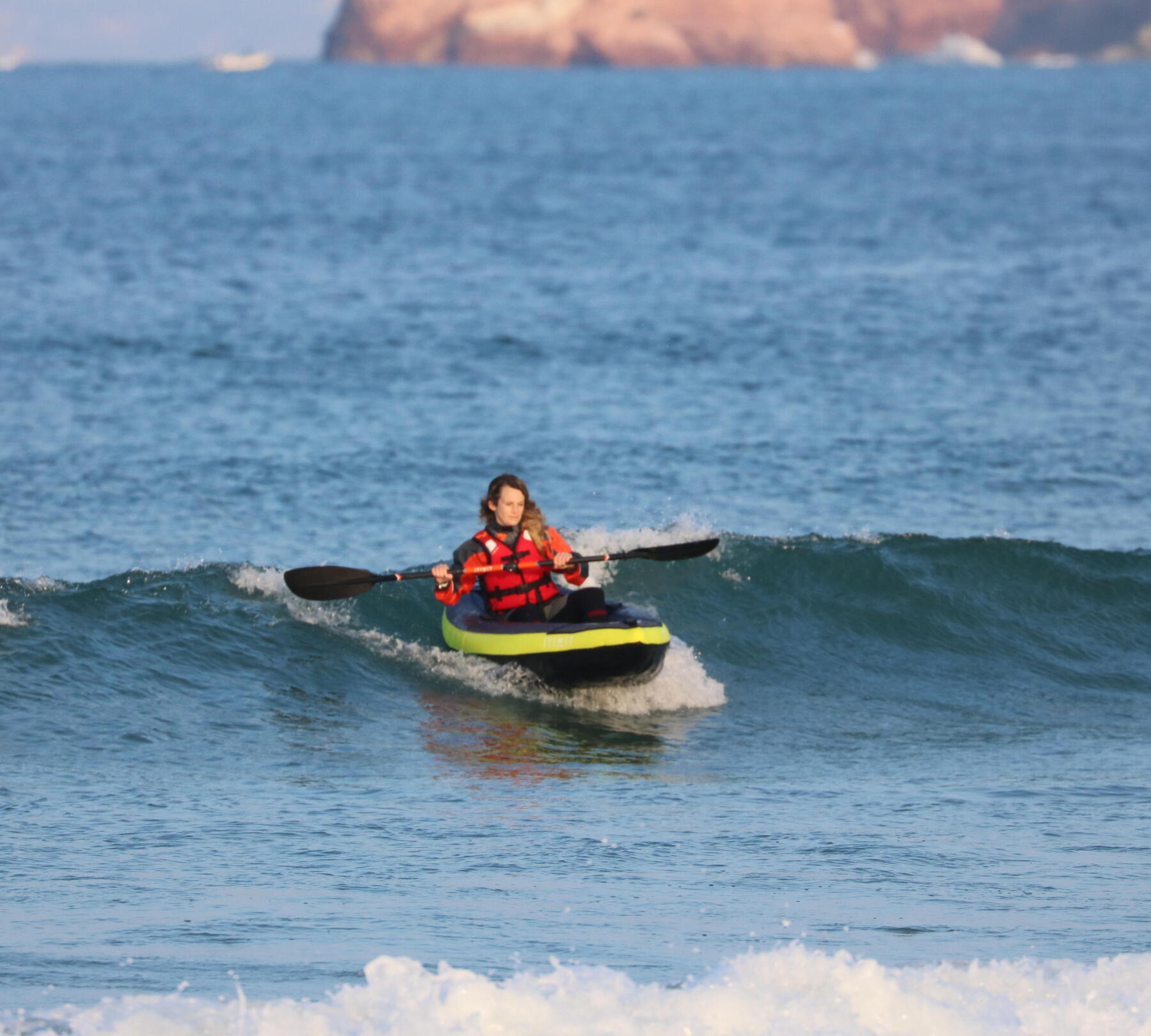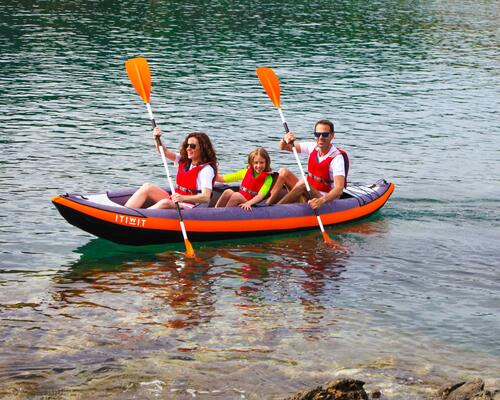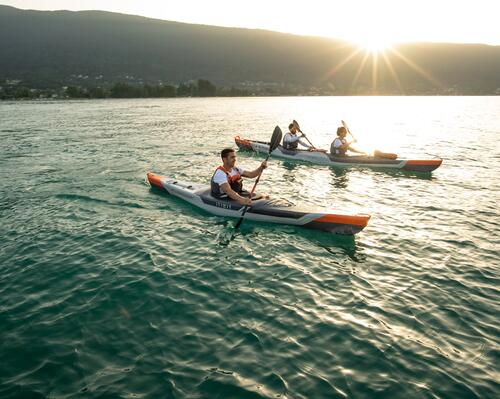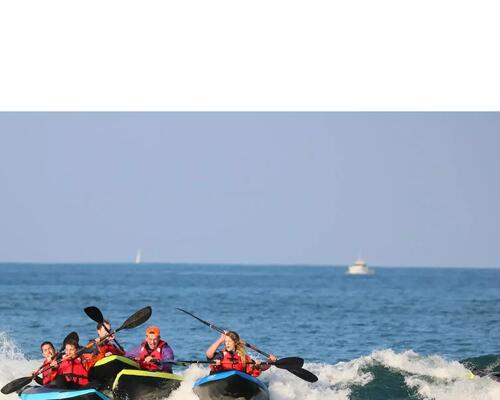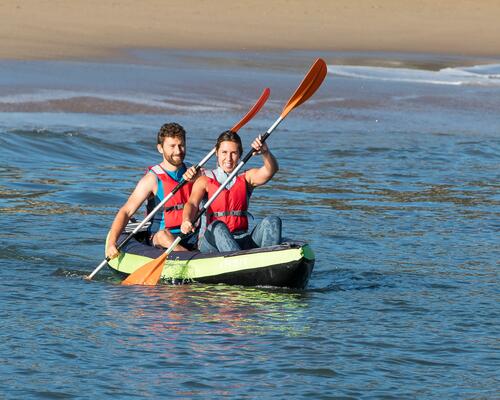#1 Keep abreast of water movements and identify them from your kayak
In kayaking, there’s an important rule to keep in mind: if river currents always carry you in the same direction, sea currents change according to the tides. And each of them has a specific effect on your practice:
– Crosscurrents can make you stray from your path,
– Bow currents slow you down, and so you risk becoming exhausted.
And if current and wind are moving in opposite directions, be extra cautious!
As you navigate, pay attention to clues that help you gauge the forces at play. To gauge the direction and strength of the current, look at the movement of fishing floats and buoys.
To check wind direction, take a look at flags that may be around.

